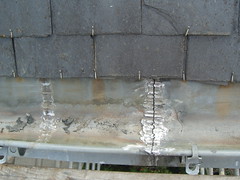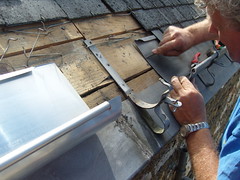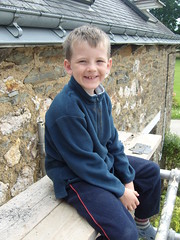Ferry collection - More Condor from Poole, less P&O from Portsmouth and even less EuroFerries
A quick catchup on some ferry bits of news that I've come across in the last couple of weeks ...
First up coming after the news that Brittany Ferries are stopping their year round summer ferry from Poole to Cherbourg, Condor Ferries have been quick to respond that they're increasing summer crossings from Poole to St Malo with 30 additional sailings of their high speed catamaran service. Condor point out that "St Malo and Cherbourg are less than 85 miles apart".
I also reported that Brittany Ferries are increasing their Portsmouth-Santander Spanish service and this news has recently been followed by an announcement from P&O that they're finishing their Portsmouth to Bilbao service in September this year.
It's interesting how one ferry company (Brittany Ferries) can be reporting that they're doing bumper service from the UK to Spain, so much so that they've bought a second boat to increase the number of sailings, whereas P&O have found the route to be "loosing millions" and after 15 years have pulled the plug. The two Spanish ports are less than an hours drive apart so I guess there'll be a lot of P&O customers who will now switch to Brittany Ferries who find themselves in a monopoly position.
And finally news of EuroFerries. I've reported a number of times about EuroFerries stop-start approach to commencing operations from Ramsgate to Boulogne, the most recent being news in November when the service start was pushed back to March 2010.
Well the news once again isn't good.
ThisIsKent reported last week that EuroFerries have cancelled their lease on the Bonanza Express which was to be used for the new service. EuroFerries logo has been painted out from the boat which has now returned to its shuttle service in the Canary Islands.
EuroFerries website still tantalisingly offers crossings "from £49" and shows a timetable starting on 1st March, but without a boat you do have to wonder how likely this is to get off the ground. More "wait and see" again ...
First up coming after the news that Brittany Ferries are stopping their year round summer ferry from Poole to Cherbourg, Condor Ferries have been quick to respond that they're increasing summer crossings from Poole to St Malo with 30 additional sailings of their high speed catamaran service. Condor point out that "St Malo and Cherbourg are less than 85 miles apart".
I also reported that Brittany Ferries are increasing their Portsmouth-Santander Spanish service and this news has recently been followed by an announcement from P&O that they're finishing their Portsmouth to Bilbao service in September this year.
It's interesting how one ferry company (Brittany Ferries) can be reporting that they're doing bumper service from the UK to Spain, so much so that they've bought a second boat to increase the number of sailings, whereas P&O have found the route to be "loosing millions" and after 15 years have pulled the plug. The two Spanish ports are less than an hours drive apart so I guess there'll be a lot of P&O customers who will now switch to Brittany Ferries who find themselves in a monopoly position.
And finally news of EuroFerries. I've reported a number of times about EuroFerries stop-start approach to commencing operations from Ramsgate to Boulogne, the most recent being news in November when the service start was pushed back to March 2010.
Well the news once again isn't good.
ThisIsKent reported last week that EuroFerries have cancelled their lease on the Bonanza Express which was to be used for the new service. EuroFerries logo has been painted out from the boat which has now returned to its shuttle service in the Canary Islands.
EuroFerries website still tantalisingly offers crossings "from £49" and shows a timetable starting on 1st March, but without a boat you do have to wonder how likely this is to get off the ground. More "wait and see" again ...
Labels: BrittanyFerries, EuroFerries, Ferry, PandO










